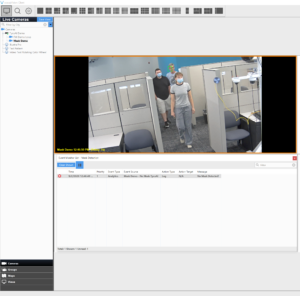Over the past few months, businesses of all sizes have been tasked with maintaining safe, healthy environments for staff and visitors against the backdrop of COVID-19. From educational and healthcare campuses to corporate offices and retail stores, many organizations are seeking to implement safeguards such as mandatory face masks to mitigate the spread of COVID-19. Intelligent applications that can help automate compliance with new health and safety procedures are being introduced to the market, which can quickly put valuable information into the hands of facility decision makers.

A new generation of video analytics, powered by artificial intelligence technology, is enabling higher levels of accuracy and speed than traditional pixel-based analytics, ensuring that organizations who depend on accurate results and high throughput can maintain the pace of their operations without having to deal with unnecessary alerts and alarms. For environments such as hospitals or healthcare organizations, where mask wearing is a critical part of a risk mitigation strategy, it’s crucial for video management systems with mask detection to operate real-time monitoring and alerting of ‘no mask’ events – making it easier to take prompt corrective action, optimize safety protocols and enhance situational awareness.

Organizations looking to audit their internal processes for improvement or regulatory compliance should also have the ability to search for ‘no mask’ events in stored video to be able to produce reports or track organizational compliance over time. Many of these functions are made easier with deep or even native integrations of video analytics into a video management system such as the new exacqVision 20.09 with face mask detection. With a seamless, cost-effective face mask detection solution, integrated from Tyco AI directly to the exacqVision VMS, this solution will continue to assist facility managers in adapting to new guidelines, and investing in cost-effective, scalable and efficient technology to help mitigate risks.
